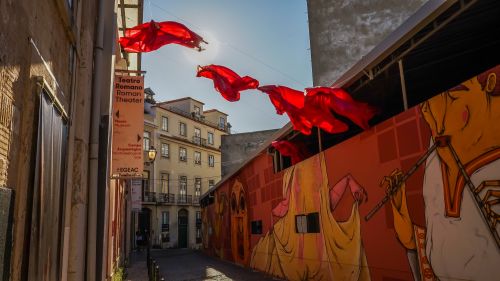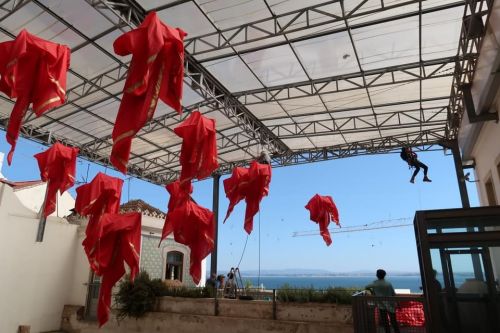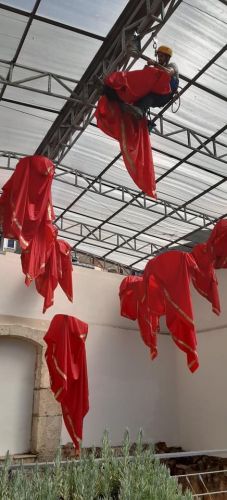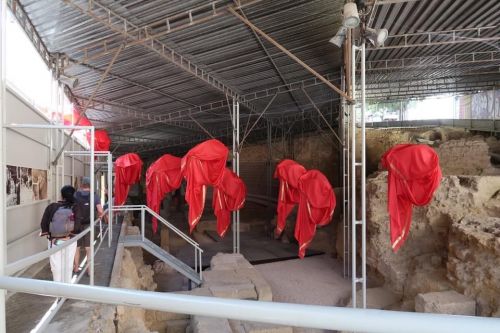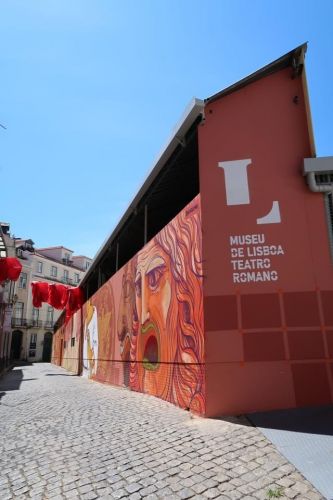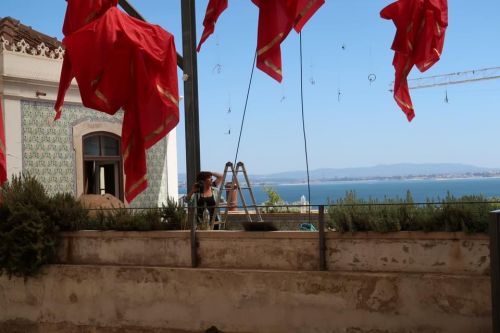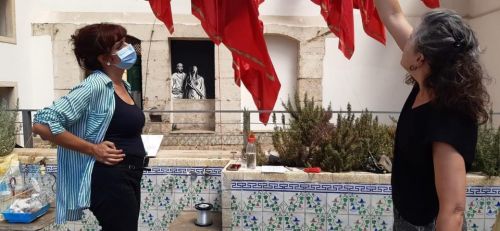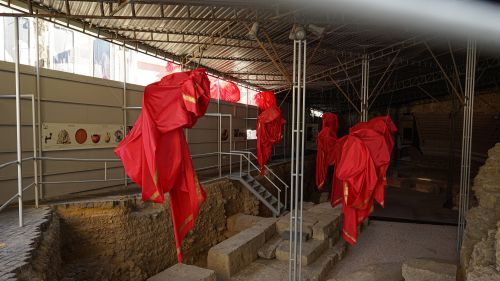Be a Roman in the Roman Theatre!
Artistic installation by Madalena Martins
03 Aug 2021 — 31 Oct 202110h – 18h
The Museum of Lisbon – Roman Theatre has new inhabitants: a group of strange Romans whom, after two millennia, travelled to our time and returned to their theatre.
With this artistic installation, present in the archaeological site, the street and the museum, Madalena Martins and her team bring together, after 2,000 years, what would be a single space: the theatre of the ancient Roman city of Felicitas Iulia Olisipo, now Lisbon.
The red garments recreate the togas of the inhabitants of that time and the hanging jewels recall their adornments.
The exhibited pieces are composed of fabrics prepared and painted by hand, attached to a metallic structure specifically created for this purpose.
All the work was carried out by inmates of the Paços de Ferreira Prison (Portugal), who carried out all the production and assembly of the 33 “ghosts”, the manual painting of the golden bar (400m long); the hot cutting of the fabric; the frame assembly, the ewing and adjustment of final components.
This animation of the space allows several readings, and the audience is encouraged to make their own interpretation. «These imagined Romans, with their purple and gold togas, can also be understood as ghosts, souls, or lemurs from the Roman period, which once again inhabit the space. The jewels may be “wind chimes” that, with the wind, drive away bad omens with their noise and charm us with our past», says Lídia Fernandes, coordinator of the Museum of Lisbon – Roman Theatre.
«These entities run through the aditus maximus - the main entrance where the city’s elite accessed the theatre’s interior - and across the Museum areas, imposing their presence in their own space. If it wasn't for the toga they carry and the instrumental jewels that invade the space, we wouldn't even notice their presence. This delicate sound and visual experience embodies the soul of these Romans and with them we travel to their past in a broad museological immersion», explains Madalena Martins.

© Museu de Lisboa
